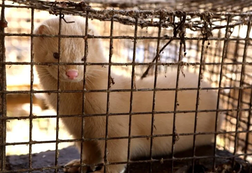|
Looking for a ferret friend to add to your “business”? Beware of those who promise ferrets – but are out to defraud you! Here’s how to avoid being scammed:
Never Prepay Scammers will often ask for a pre- or down payment to hold the pet for you. They will ask to be paid through services such as Venmo, Paypal, CashApp, etc. NEVER DO THIS! Never pay for a pet until you have it in your hands, you have examined it, and you are taking it home. Asking for a prepayment: this is a RED FLAG for fraud. Location “Switch” You contact the site and are told that the pet is at a different location than advertised. This is HIGHLY SUSPICIOUS. Usually the scammer will demand a down payment so that they can secure the pet for you and arrange for some kind of transport to your location. Say "NO" - this is a RED FLAG. Visit the Facility Request to visit the facility and meet the pet. This allows you to see the state of the facility and the animal. Even if you are not located in the area near the animal facility, you can say that your friend or family-member can stop by. If they refuse to allow a visit at the animal's location: this a RED FLAG. Animal is to be Shipped to You. Reputable breeders, shelters, welfare organizations and even pet stores and other retailers do not ship ferrets to noncommercial recipients. If shipping is discussed: this is a VERY BIG RED FLAG. Do Your Own Check Ask for the full name and street address of the individuals you are dealing with. Check to see if they are “real."
Search for REVIEWS online. If you are having doubts or questions, often others have seen the same ads or invitations, and their experiences are important. Make sure that the organization is “real” and not impersonating another organization. This can require a phone call to the named organization you think you are dealing with. If you cannot confirm the association, do not pursue the transaction. There will be other opportunities to locate your next ferret! Note: If you come across a scam regarding ferrets, let us know! Contact: [email protected] . 40,000 Minks Released From Ohio Fur Farm By Anti-Fur Activitists Caged Farm Mink Caged Farm Mink Dec 1, 2022: An estimated 40,000 minks were released from an Ohio fur farm by activists who smashed their enclosures. The Van Wert County Sheriff’s Office released a statement on social media to alert local residents. It said that the Lion Farms USA fur facility had been broken into. A later update revealed many of the minks had been recaptured, although around 10,000 remained unaccounted for. The mink that were raised and kept in captivity are unlikely to survive on their own, farm manager Eddie Meyer said. Meyer told news site WANE that he expected 95 percent of them to die within a few days. Today there are about 250 mink farms in the United States, producing in the region of 3 million pelts (whole animal skins, including the fur) every year. Typically they supply the fashion sector, which makes coats and garment trims from mink fur. Minks raised on farms are not covered by the US Animal Welfare Act or the Humane Slaughter Act, and care for these mustelids is thought to be largely thought to be nonexistent. Animals are frequently caged in small, empty wire boxes, stacked on top of each other. This allows farmers to cram the maximum number of animals into any given space until they are ready to be slaughtered and skinned. Sheds housing the animals are frequently overcrowded, hot, and free from stimulation. This results in many animals self-mutilating to try and free themselves or attacking others. Injuries are not treated, and animals are often left to die slowly and in pain. Common execution methods include anal electrocution, cervical dislocation, and mass gassings. Unsafe Conditions means Vectors of Disease In addition to ethical concerns, mink farms are hotspots for disease transmission. Due to the cramped and filthy conditions, illness can spread quickly through mink farms. This was observed during the height of the COVID-19 pandemic, with farms reporting mass infections around the world. Millions of minks were killed as a result, with more than 15 million being executed in Denmark in 2020 alone. In addition, multiple regions around the world implemented bans on mink fur farming to stem the zoonotic disease risk. Sweden, British Columbia, Hungary, and Italy are notable inclusions. Ohio’s unidentified animal activists The activists responsible for freeing the 40,000 minks in Ohio reportedly spray-painted the letters “ALF” on the farm. This could stand for activist organization the Animal Liberation Front (also known as the ALF), which claimed credit for a previous release of 1,000 minks in Ohio. However, the ALF has not yet received a claim for this incident. As a decentralized activism collective, individual members of the ALF carry out actions designed to free animals from captivity. Nobody is in charge of organizing the group, and activities can be claimed by individuals, usually anonymously, after the fact. |
Details
Archives
April 2024
Categories
All
|
|
Terms and Conditions
|
allFerrets® 2014-2024. ALL RIGHTS RESERVED.
Proudly designed by widgIT |


 RSS Feed
RSS Feed
